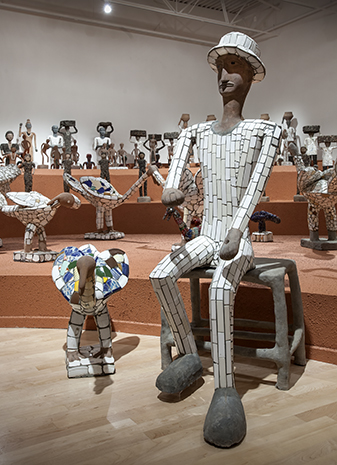Nek Chand, The Rock Garden of Chandigarh, Chandigarh, India
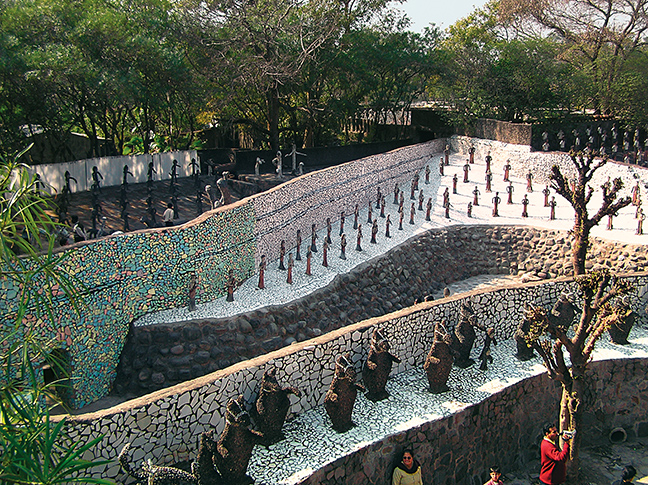
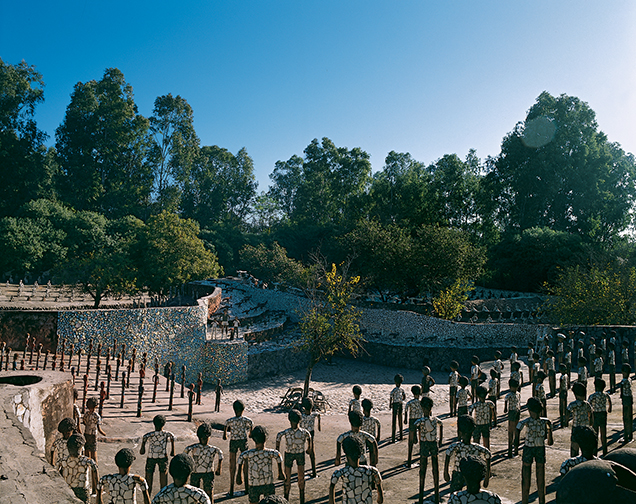
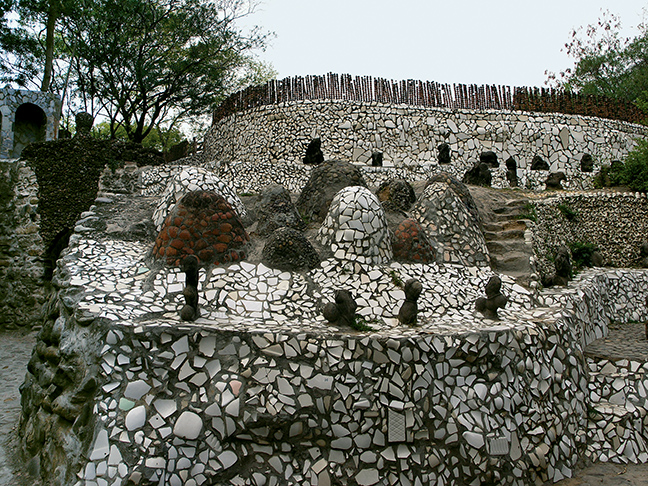
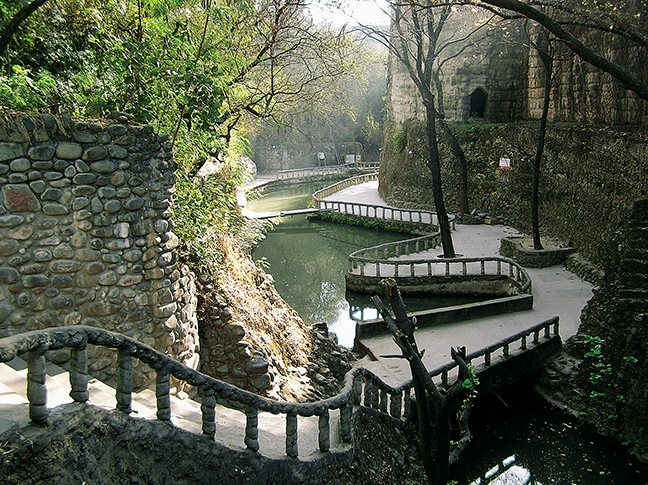
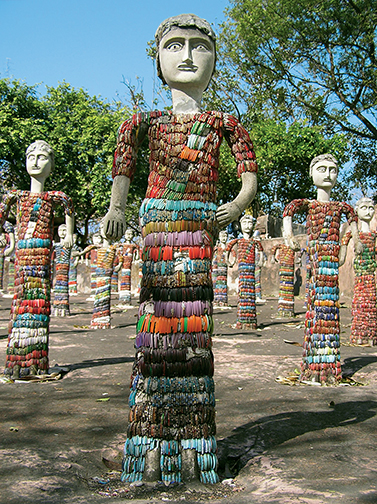
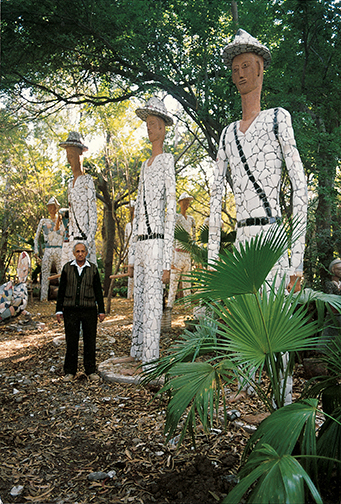
The Site
Beginning in 1965, while working as a road inspector near Chandigarh, India, Nek Chand began constructing an imagined kingdom of concrete “immortal beings” on a piece of unused city-owned land. Made from rocks he had been collecting for years, and detritus from the nearby dump, Chand’s idyllic city organically materialized.
Set within more than twenty-five acres of lush vegetation, Chand’s divine kingdom now consists of courtyards, chambers, terraces, winding paths, waterfalls, and thousands of human and animal concrete figures embedded with stones, pottery shards, colored glass, and repurposed rubble. When the garden was finally discovered, its demolition was spared because of public acclaim. In 1976 it was inaugurated as an official public space by the Indian government and today draws visitors from around the globe.
Forever fearful that his garden would be destroyed, Chand worked directly with the Kohler Foundation, Inc., and the Arts Center to assemble a representative selection of his sculptures that was gifted in 1999. Nek Chand died in 2015, though the Rock Garden remains open to the public.
Nek Chand
1924–2015
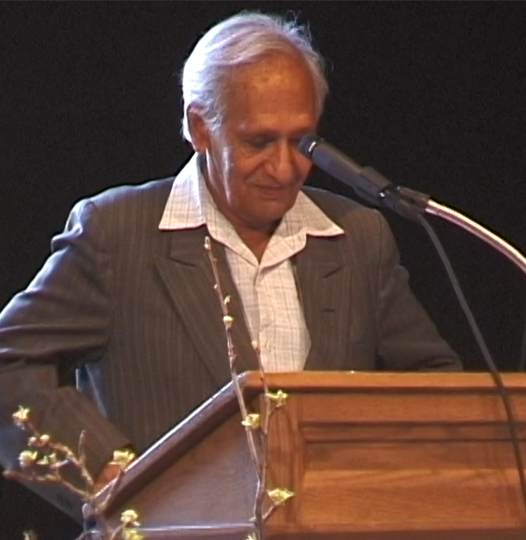
Nek Chand was born in 1924 in Berian Kala, Tehsil Shakargarh, India (now Pakistan). After the partition of India, when British rule came to an end in 1947, Chand’s Hindu family fled the new Muslim state on foot to New Delhi, India, nearly three hundred miles away.
In 1951 Chand moved north to Chandigarh. The government had engaged the modernist architect Le Corbusier to design a new capital for the region from the ground up; his vision radically altered Chandigarh’s layout and required razing numerous villages. While working as a road inspector, Chand began collecting rocks and stones during long bicycle journeys. He secretly stored his growing collection on a secluded parcel of protected land adjacent to a dump, from which he salvaged materials from the demolished villages. Having cleared some of the scrubland and arranged his finds for years, Chand began building the first phase of his garden in 1965. By the time of his death in 2015, his Rock Garden consisted of twenty-five acres housing thousands of concrete sculptures.
Beginning in 1996 and over the course of eight years, more than 150 sculptures from the Rock Garden were gifted to the John Michael Kohler Arts Center. Chand, who died in 2015, aided the Arts Center and Kohler Foundation, Inc., in selecting works to receive lasting care and be seen in a significant grouping outside India.


